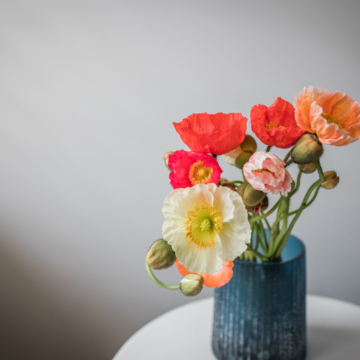Flower pressing is a beautiful and delicate art form that has been practised for centuries. It involves preserving flowers by flattening and drying them, which can be used for a variety of purposes. It holds significant cultural and personal meaning, and is a popular hobby for many. Whether used for decorative purposes or as a therapeutic practice, flower pressing is a wonderful way to connect with nature and express creativity.

Did you know…
- The oldest known flower press was discovered in a tomb in Egypt and is estimated to be over 1,500 years old.
- Flower pressing was a popular pastime for Jane Austen, who often included references to pressed flowers in her novels.
- In some cultures, such as Native American and Celtic cultures, certain flowers were believed to have spiritual and healing properties.
- Flower pressing can be done with a variety of plants, including leaves, ferns and seaweed.
In this blog, we will explore the history, cultural significance, techniques, and dos and don’ts of flower pressing.

History and Cultural Significance of Flower Pressing
Flower pressing dates back to ancient Egypt, where flowers were pressed and dried as a way of preserving their beauty. This practice then spread to other cultures such as the Greeks and Romans. During the Renaissance period, flower pressing became a popular pastime for wealthy Europeans, who used the dried flowers to create intricate designs on paper.
Flower pressing has been used in various cultures for different purposes. In Japan, for example, flower pressing is known as Oshibana and is used to create traditional art forms. In Victorian England, flower pressing was used to preserve flowers for use in home decor and fashion accessories. In modern times, flower pressing is still used for decorative purposes, such as creating cards, bookmarks and wall art.
Flower pressing can also hold significant meaning for individuals. It can be used as a way of preserving memories of a special event, such as a wedding or anniversary, or as a way of commemorating a loved one who has passed away. Flower pressing can also be a therapeutic and meditative practice, allowing individuals to connect with nature and express their creativity.
Flower pressing is a popular hobby for many reasons. It is a simple and affordable way to create beautiful and unique pieces of art. It is also a great way to connect with nature and express creativity. Additionally, flower pressing can be a therapeutic and meditative practice, providing a sense of calm and relaxation.
Flower Pressing Techniques and Tips
There are various techniques used in flower pressing, but the most common method involves placing the flowers between layers of absorbent material, such as paper or cardboard, and pressing them down with a heavy object. The flowers are left to dry for several weeks until they are completely flat and dry.

There are several dos and don’ts to keep in mind when flower pressing:
- Do use fresh flowers that are in good condition.
- Do choose flowers with flat surfaces that will be easier to press.
- Do use absorbent materials such as paper or cardboard.
- Do place the flowers in a warm, dry place for several weeks (4-7 weeks)
- Don’t use flowers that are too thick or have a lot of moisture, as they may rot instead of drying.
- Don’t stack too many layers of flowers on top of each other, as this can prevent them from drying properly.
- Don’t use heavy objects that may crush or damage the flowers.

Interested in learning more about floristry as a hobby? Check out our latest eBook, Beyond The Basics eBook. It’s a go-to guide for any aspiring hobby florist!





